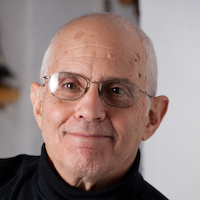View this post on Instagram
I was hit surprisingly hard by the images of Notre-Dame cathedral burning.
I got so emotional watching the spire collapse and the red flames engulf the roof; it was as if something dear to me was being destroyed.
This was odd, because I’m not one of those Francophiles who speak French or spent junior year in Paris or vacations in France every year. I’ve been to Paris three times in my whole life, for a total of maybe 15 or 16 days. I’m not even Catholic. Yet there I was, feeling heartbroken, as if my former home was aflame.
Looking back, I realize I was lamenting the loss of a sacred space, and sacred spaces are vital habitats for the soul.
In my few short visits to Paris, I was drawn to Notre-Dame. I spent hours in and around it. I gazed at the exquisite structure from all angles, at different times of day and night, always feeling elevated by its magnificence.
Art, like nature, can do that for us. Paintings and sculptures can do it, and music of course, and so can architecture at its best. Man-made treasures like Notre-Dame evoke feelings of awe and transcendence every bit as much as the grandeur of a mountain range or the perfection of a flower.
But Notre-Dame is not just a sublime work of art with flawless details and resplendent features like stunning stained glass windows and delicately intricate carvings. It’s not just a historical artifact like the Acropolis in Athens, or a symbol of an enduring culture like the Roman Coliseum. It’s also a functioning house of worship, and has been for centuries. Within its walls, millions have prayed, poured out their hearts in love and anguish, withdrawn into their depths, offered up their souls.
Like most venerable sacred sites, it contains holy vibrations. Such places work on your soul like dazzling art works on your senses. If you pay attention, you can feel that energy whether you’re sitting in silent meditation or having your bones rocked by the sound waves from the cathedral’s organ.
I’ve taken refuge in many places, from landmark pilgrimage sites to secreted shrines in pastoral villages and dense urban streets to commonplace chapels and temples. They all deserve to be called sacred spaces, but only a few can elevate the soul in two ways—as awesome works of beauty and as containers of divine energy. Notre-Dame is one of those rarities, which is why I think so many of us were shaken by the sight of it burning.
The celestial splendor of many man-made objects has moved me as much as Notre-Dame. In fact, nothing has ever matched the first time I laid eyes on the Taj Mahal. I went to see that architectural marvel because I was an hour away and a visit seemed obligatory. I went at sunrise because someone said the dawning light on the famous structure was special. I expected a pretty view. I did not expect to be overwhelmed. I did not expect tears to come to my eyes. I did not expect to sit raptly for over an hour, staring at the perfect symmetry of the Taj as the pastel shades on the white façade changed with the rising sun.
The Taj Mahal’s interior is also exquisite. But it does not feel like Notre-Dame, or like other less spectacular structures that have absorbed the vibrations of meditation, prayer, and devotion over long periods of times. The Taj is a mausoleum, not a house of worship. People by the thousands are herded through its inner chambers every day, with barely enough time to appreciate its aesthetic glory, let alone sit in tranquility and let it soak in. But a short distance from the Taj, on the same protected grounds, stands a functioning mosque. The red sandstone structure is itself a work of art (although next to the Taj it seems drab), but inside you can feel something you don’t feel within its illustrious neighbor: the sacred deposits of countless prayerful Muslims over time.
For me, Notre-Dame’s frightful injuries are a reminder of the importance of sacred spaces. In our toxic, noisy, aggravating world, we need their tranquility, their holiness, their capacity to soothe and uplift.
This has nothing to do with religion, and certainly not with sectarianism. Truly sacred spaces are for everyone, secular and spiritual alike.
We should never get so cynical or jaded—or so intimidated by the forces of modernization and development—that we fail to preserve and protect them.










Read 4 comments and reply